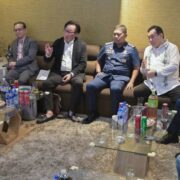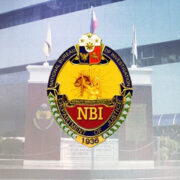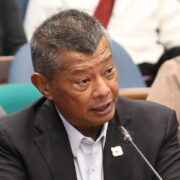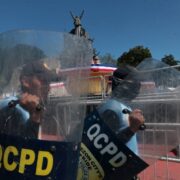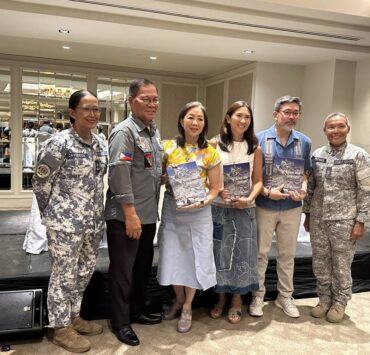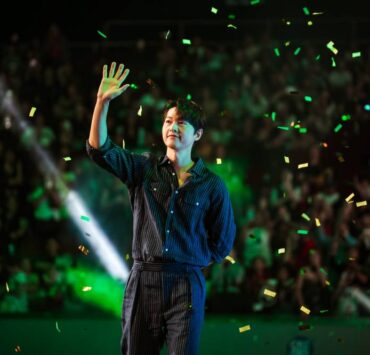Miró grandson continues poetic legacy in Manila
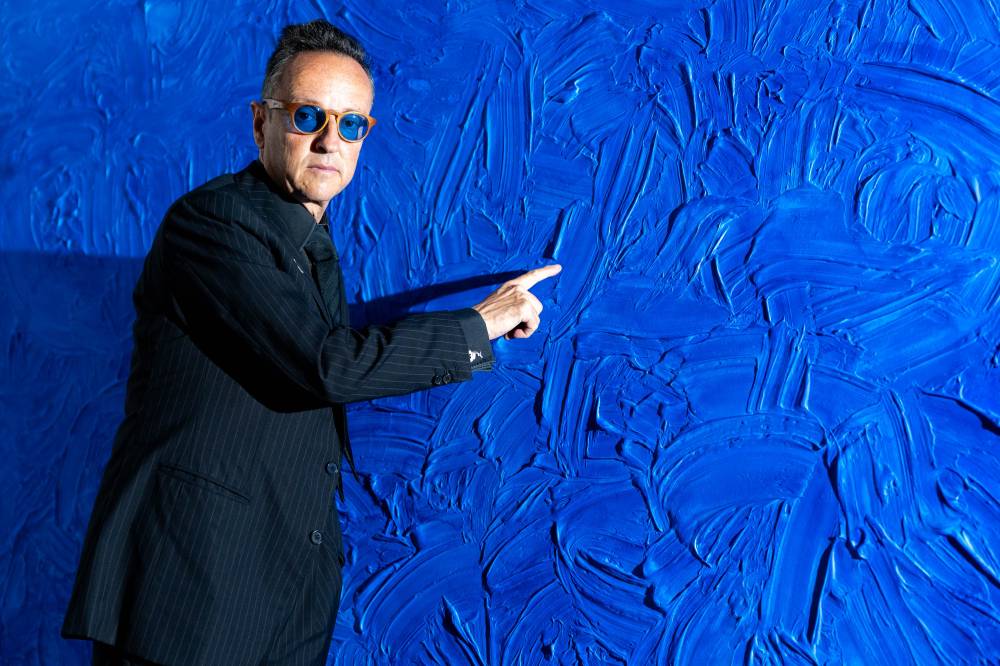
I’ve had my feet on the ground and my eyes on the stars. It represents flight toward infinity, toward the sky while remaining on earth,” said the Spanish modernist Joan Miró, whose poetic worldview defined not only his artistic language, but also his philosophy of life.
Though he died in 1983 at the age of 90, Miró is often described as an artist ahead of his time—one whose influence stretches well into the 21st century. Blending abstraction with symbolic forms and a deep spiritual resonance, his work broke visual boundaries and continues to mesmerize for its mystical energy and relevance.
That legacy now rests, in part, with his grandson, Joan Punyet Miró, a visual artist, writer, and custodian of the Miró estate.
The Philippines was once terra incognita to the younger Miró. That changed when León Gallery International (LGI) in Makati extended an invitation to exhibit in collaboration with Galeria Cayón in Madrid. The name Miró carries weight among Filipino collectors—some of whom already own works by the elder Miró—and the response was immediate.
At the opening of “Punyet: L’azur (Blue): A Homage to Mallarmé,” held at LGI, Miró arrived in a midnight blue suit, his look accented by a silver pin and matching cufflinks modeled after his grandfather’s 1947 sculpture “Moonbird.” The lunar-shaped figure, a fusion of avian and celestial forms, mirrors the cosmic themes that pervade much of the elder Miró’s work. The accessories, subtle but symbolic, echoed the exhibition’s ethereal tone and quietly linked his past to the present.
Miró spent a month in Manila preparing for the show, creating 10 large-scale works at a white space near the gallery. From 6 a.m. to 3 p.m. each day, he worked by hand, spreading plaster across canvases and wood panels with sweeping gestures dictated more by instinct than plan. These swirling, tactile movements mirrored the natural rhythms of water—the ebb and flow, the quiet breath of waves. Over this textured surface, he applied layers of blue ink, along with darker or metallic tones, to build depth, light, and shadow.
Cosmic works
Water, both as a symbol and a substance, is central to this new body of work. Miró’s abstractions are shaped by the movement and change inherent in water itself. In this exhibition, he positions his art as a contrast to the idyllic and romanticized imagery often associated with Filipino visual traditions—particularly the sunny rural scenes made famous by Fernando Amorsolo.
“I wanted to offer something radically different,” Miró says. “Something that challenges the viewer’s expectations—a break from convention.”
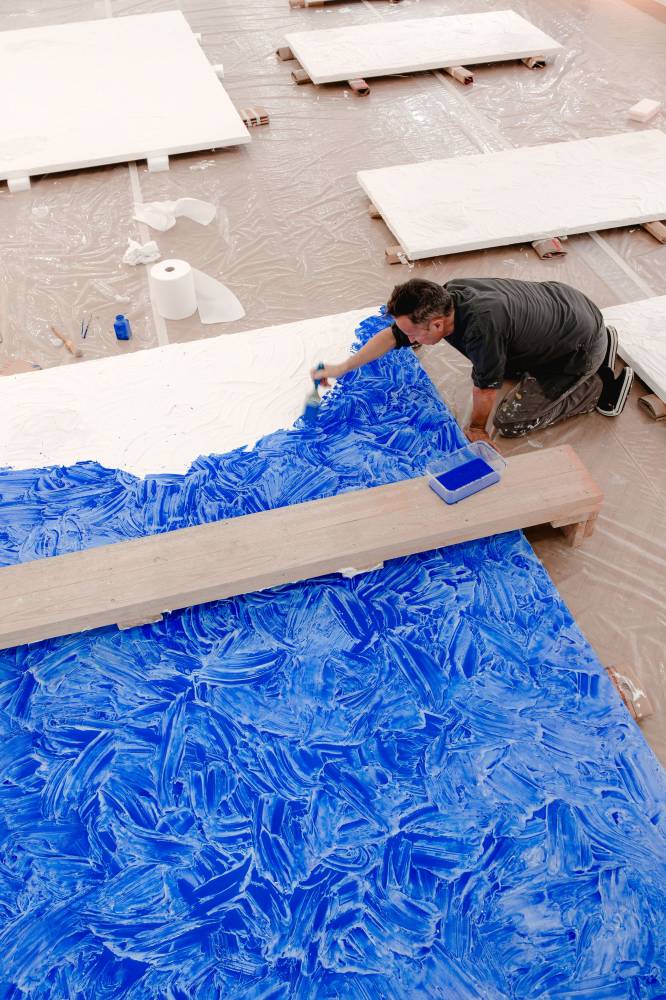
Born on the island of Mallorca and now deeply drawn to Manila, Miró sees water as a bridge between his Spanish roots and his experience in the Philippines. His paintings evoke the rhythms of waves as they rise, break, and dissolve into foam. That final, fleeting moment—the residue of movement left on the shore—is what he aims to capture: a visual memory, ephemeral yet alive.
Through abstraction, Miró channels water as a living force—transient, powerful, meditative.
His grandfather’s influence is apparent throughout. Expanses of pure color, often applied in just one or two hues, recall the elder Miró’s signature style. But beyond the visual language, there is a shared sense of metaphysical inquiry. Like his grandfather, Miró views painting as a way to access the subconscious and to engage with the universe.
His creative process begins with a dream. “I navigate through the subconscious guided by intuition,” he says. “Then I find ways to make those inner visions tangible.”
His technique—using hand-applied plaster as a base, then layering ink—gives physical form to ideas that begin in the mind.
In the piece “Celestial,” airy swirls of aqua and white suggest the heavens, the cosmos, and what Miró calls “something extremely nonmaterial, untouchable.”
Depending on the light, “Afterlife” plunges into a deeper blue, conjuring a vision of death as a descent into the void. Other works feature shadowy figures or hints of turbulence, as if evoking inner storms or shifting emotional tides.
Keeping the legacy
Joan Punyet Miró was born in 1968. His artistic awakening began during weekends with his grandfather in Palma de Mallorca.
“There were paintings everywhere—reds, blues, blacks, greens. That’s where I felt the power of color for the first time,” he says. He was 15 when his grandfather died, but the impact of those visits endured.
Years later, he moved to New York to study art history at New York University. In 1992, he began painting formally and has continued ever since, building a body of work that both honors his lineage and asserts his own voice.
Today, he serves as a key figure in preserving the Miró legacy. He manages the estate and plays leading roles in three institutions: the Successió Miró, which oversees the artist’s rights and archives; the Fundació Pilar i Joan Miró a Mallorca, a museum and cultural foundation established by the artist and his wife; and the Association pour la Défense de l’Oeuvre de Miró, which works with international auction houses such as Christie’s and Sotheby’s to authenticate and protect Miró’s works.
He is also a published author, having written and contributed to books in English, Spanish, and French, with more in the works. Writing, like painting, is part of his mission to deepen public understanding of his grandfather’s creative philosophy.
Before returning to Spain, Miró reflected on his time in the Philippines. He had seen Intramuros, Tagaytay, and El Nido—the usual highlights—but what he said he would take home wasn’t a place, but a feeling.
“The warmth of the people,” he said.
And the chaos in Manila? Wasn’t the traffic overwhelming?
“Even the Spaniards are chaotic,” he replied.
“Punyet: L’azur (Blue): A Homage to Mallarmé” runs through June 7 at Leon Gallery International, Corinthian Plaza, 121 Paseo de Roxas, Makati.



